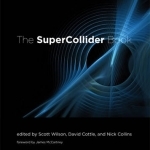The SuperCollider Book
BookThis item doesn’t have any media yet
2011 | Computing & IT
SuperCollider is one of the most important domain-specific audio programming languages, with potential applications that include real-time interaction, installations, electroacoustic pieces, generative music, and audiovisuals. The SuperCollider Book is the essential reference to this powerful and flexible language, offering students and professionals a collection of tutorials, essays, and projects. With contributions from top academics, artists, and technologists that cover topics at levels from the introductory to the specialized, it will be a valuable sourcebook both for beginners and for advanced users. SuperCollider, first developed by James McCartney, is an accessible blend of Smalltalk, C, and further ideas from a number of programming languages. Free, open-source, cross-platform, and with a diverse and supportive developer community, it is often the first programming language sound artists and computer musicians learn. The SuperCollider Book is the long-awaited guide to the design, syntax, and use of the SuperCollider language.
The first chapters offer an introduction to the basics, including a friendly tutorial for absolute beginners, providing the reader with skills that can serve as a foundation for further learning. Later chapters cover more advanced topics and particular topics in computer music, including programming, sonification, spatialization, microsound, GUIs, machine listening, alternative tunings, and non-real-time synthesis; practical applications and philosophical insigh"s from the composer's and artist's perspectives; and "under the hood," developer's-eye views of SuperCollider's inner workings. A Web site accompanying the book offers code, links to the application itself and its source code, and a variety of third-party extras, extensions, libraries, and examples.
Related Items:
| Published by | MIT Press Ltd |
| Edition | Unknown |
| ISBN | 9780262232692 |
| Language | N/A |
Images And Data Courtesy Of: MIT Press Ltd.
This content (including text, images, videos and other media) is published and used in accordance
with Fair Use.
